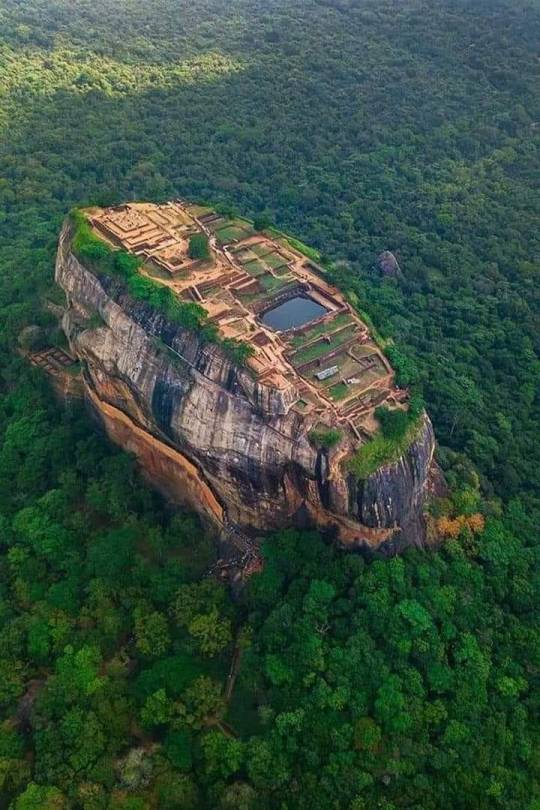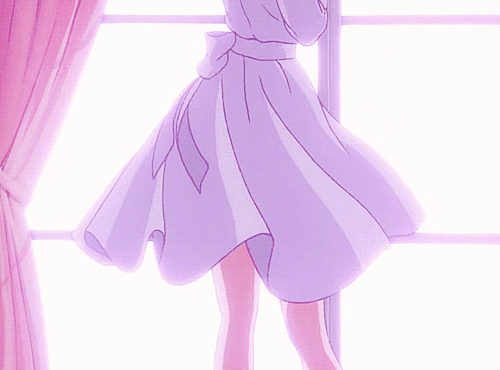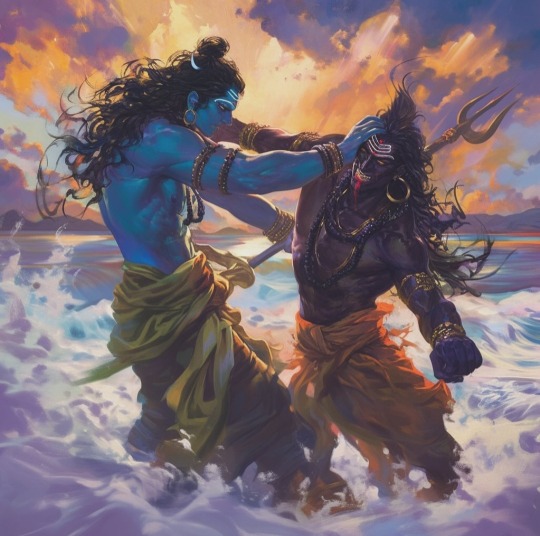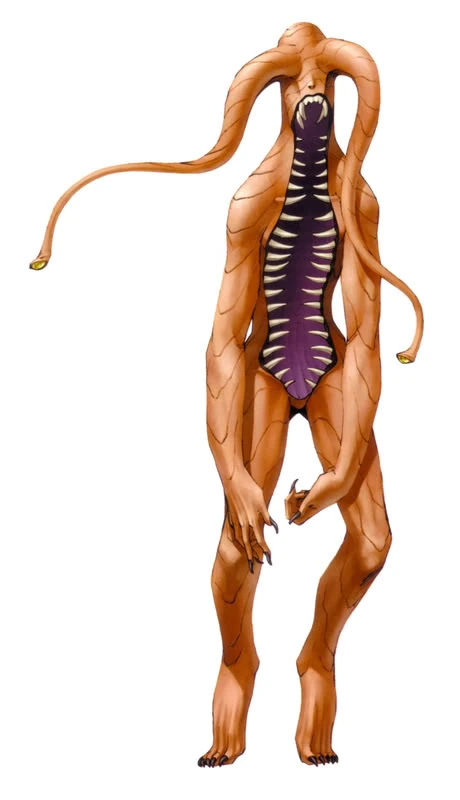#kashyapa
Explore tagged Tumblr posts
Note
Idk why but imagine Rishi Kashyap's entire family having some kind of family gathering where all of them have to... Ahem.. behave.. reluctantly... (Im talking about all of them lmao) T_T
☠️
That's like his worst nightmare.....
But kisne bola tha itno ko paida krne 🗿 (/j)
15 notes
·
View notes
Text
From Kashmir to Kashyap (Amit Shah) - Sanskrit words and names!
#sanskrit#sanskritlanguage#kashmir#kashyap#kashyapa#maharshikashyap#learnsanskrit#sanskriti#sanskritlove#hinduism#sanatandharma
0 notes
Text
WHO ARE THE SEVEN SAPTARISHIS?
In Hindu mythology, the Saptarishis, also known as the Seven Sages or Seven Seers, are a group of seven ancient sages or rishis, who are believed to have played a significant role in shaping the spiritual and cultural heritage of India.
0 notes
Photo

Sigiriya Fortress
Sigiriya, aka Sinhagiri, is an ancient rock fortress in Sri Lanka. According to the ancient chronicles, this area was a large forest; however, it became a hill after the storms and landslides. Then, the hill became the new capital of Sri Lanka in the 5th century AD. King Kashyapa (477- 495) built a palace decorated with frescoes on top of it. He also built a gateway in the shape of an enormous lion on a plato leading to the palace. This gateway also gave the fortress its name, “Sinhagiri,” meaning the lion rock.
Photo: jordhammond
#sigiriya fortress#fortress#sinhagiri#rock fortress#sri lanka#history#king kashyapa#palace#frescoes#lion rock#jordhammond
4 notes
·
View notes
Text

Sigiriya is an archaeological site in central Sri Lanka. It consists of the ruins of an ancient palace, built during the reign of King Kashyapa (477-495 AD). It is one of the eight World Heritage Sites of Sri Lanka and a favorite attraction for foreign tourists. Protected by UNESCO
Read more: https://news156media.com/the-lion-fortress-of-sri-lanka-was-swallowed-by-the-jungle/
308 notes
·
View notes
Text




Lord Indra - Kings of the Devas
"Indra, the mighty wielder of the thunderbolt, reigns supreme as the King of the Devas, the celestial realm".
Lord Indra's roots are firmly planted in the Vedic scriptures, especially the Rigveda. Born to the sage Kashyapa and the primordial goddess Aditi, his divine lineage sets the stage for a mythic narrative of cosmic significance. The Rigveda sings hymns praising Indra's valor, recounting his legendary battles against the serpent demon Vritra. This epic clash establishes Indra as a heroic figure and the vanquisher of chaos.
Role in the Hindu Pantheon:
Beyond the Rigveda, Lord Indra's role in the Hindu pantheon is multifaceted. As the ruler of Svarga, the heavenly abode, he governs with regal authority and martial prowess. Indra emerges not only as a warrior defeating demonic adversaries but also as the upholder of dharma, ensuring that cosmic order and righteousness prevail. HYMN VII. Indra.
1 INDRA the singers with high praise, Indra reciters with their lauds, Indra the choirs have glorified. 2 Indra hath ever close to him his two bay steeds and word-yoked car, Indra the golden, thunder-armed. 3 Indra hath raised the Sun on high in heaven, that he may see afar: He burst the mountain for the kine. 4 Help us, O Indra, in the frays, yea, frays, where thousand spoils are gained, With awful aids, O awful One. 5 In mighty battle we invoke Indra, Indra in lesser fight, The Friend who bends his bolt at fiends. 6 Unclose, our manly Hero, thou for ever bounteous, yonder cloud, For us, thou irresistible. 7 Still higher, at each strain of mine, thunder-armed Indra's praises rise: I find no laud worthy of him. 8 Even as the bull drives on the herds, he drives the people with his might, The Ruler irresistible: 9 Indra who rules with single sway men, riches, and the fivefold race Of those who dwell upon the earth. 10 For your sake from each side we call Indra away from other men: Ours, and none others', may he be. ~Indra in the Rig-Veda - Book I
37 notes
·
View notes
Text
Women in Mahabharata - Danu

She is the mother of the Danava tribe and a wife of Kashyapa. She is among the progenitors of the many non-Manava tribes such as Deva, Daitya, Danava, Naga and Garudas.
Forerunners among her children include Vritra, Puloma and Vrishaparva, and she is the grandmother of Shachi, Indumati and Sharmishtha.
19 notes
·
View notes
Text

If there is one thing about Peng that makes me sad is how people just treat him like a asshole I mean yeah in the clips in the show he does seem like a asshole but well…lemme explain.
I believe he is more then what people see him as especially considering the myths about him and some stuff in the clips if you don’t know Peng was also known as king Garuda the king of birds in Indian mythology (both Hindu and Buddhism)
his mother and father were Kashyapa and Vinata he is the half brother of the Devas, Gandharvas, Daityas, Danavas, Nāgas, Vanara and Yakshas and younger brother of Aruna he is also known as the sworn uncle of the Buddha himself and now you may say to me “well no wonder he is selfish or whatever”
well I didn’t get into his life yet and note I shall copy and paste this
here is one about hindu mythos
“Kashyapa's two wives, Vinata and Kadru, wanted to have children, so he granted each of them a boon. Kadru asked for one thousand Naga sons, but Vinata only asked for two, yet each an equal to all of Kadru's thousand sons. Kashyapa blessed them, and then retreated to a forest to meditate. Later, Kadru gave birth to one thousand eggs while Vinata gave birth to two. After incubating them for five hundred years, Kadru's eggs hatched and out came all of her sons. Vinata, eager for her own sons, impatiently broke one of her eggs. From this egg emerged the partially formed Aruna, although he looked like the morning sun, he was not as bright as the midday sun as promised. Aruna chided his mother, Vinata for her impatience, and warned her to not break open the second egg, cursing her to be a slave until his brother rescued her. Aruna then left to become the charioteer of Surya, the sun god. Vinata waited, and after many years the second egg hatched, and Garuda was born
After losing a bet to Kadru through trickery, Vinata was forced to become her slave. Garuda later asked his brothers to free his mother from her slavery, to which they demanded amrita from heaven. Garuda waged a war against gods with his extraordinary might and abilities beyond thinking, and defeated all of them, including King Indra. He then took Indra's nectar vessel and flew back to earth. Vishnu then came to Garuda, and asked him to be his ride, to which he agreed. Indra requested that Garuda not give the amrita to the Nagas though, as it would bring great trouble later, so they forged a plan. Upon reaching his brothers Garuda placed the vessel before them, and asked them to first purify themselves before drinking. Meanwhile, Jayanta, the son of Indra, stole the vessel back. Upon returning, the Nagas were all devoured by Garuda”
so practically Peng was the son of a Slave and had to kill his own brothers (and practically cousins) to free his own mother
Now in Buddhism it’s abit different
“Legend holds that in primordial times, the original Phoenix (Fenghuang), the leader of flying beings, gave birth to the peacock Mahamayuri and to the eagle named the Golden-Winged Great Peng. The peacock once consumed the Buddha, who managed to escape by cutting through her stomach. At that time, the peacock preyed on humans, and the Buddha intended to kill it. However, the deities intervened and urged him to stop. In exchange for a promise to renounce its habit of preying on humans, the Buddha elevated the peacock to the status of his godmother, while the eagle became his uncle and was granted a high position in heaven.Peng sits at the head of the Buddha's throne in the Western Paradise
In this his slibing tried to kill the Buddha they almost died the celestials stop him but either way you look both is pretty dark I mean imagine you’re slibing tried to eat the fucking Buddha and almost died
now into lmk
from what we seen he just has a ego and asshole well I believe he is more then that (cause well…azure doesn’t seem to be the type to like be friends with a asshole) and from what we seen Peng seems rude but not as rude to his friends sure he gives some insults to macaque but he also kinda insulted wukong but other then that he doesn’t really treat them all horribly
To me he just has hard time being friendly to others but he genuinely does seem to care for his friends hell he showed a lot of worried for azure when he was in pain Peng shows he cares in his own way he maybe abit egotistical admittedly but like he does care for his brothers
and what’s worse what happens in the season 4 special now I may hate that special a lot but like doesn’t change the fact Peng is practically the only one who managed to ran away
imagine how he must feel his best friend his brother is DEAD his other brother is now in prisoned and everyone is celebrating in the beach I mean I be pretty pissed off and hurt and it sucks cause it seems we are never gonna see Peng again or tusk or azure
they deserved more then how the fans or the show treats them especially Peng and azure I just wish we could have seen more of Peng softer side though
anyways thank you for reading have a good day or night lads and lasses
#monkie kid#lego monkie kid#lmk azure lion#lmk peng#lmk yellow tusk elephant#lmk thoughts#lmk macaque#lmk swk#monkie king#monkey king#golden winged peng#lmk yellowtusk#monkie kid yellowtusk#yellow tusk elephant#yellowtusk the wise#azure lion#six eared macaque#monkie kid macaque#lego macaque#lego wukong#thoughts
28 notes
·
View notes
Text
Personal Nakshatra Observation Series
SHRAVANA NAKSHATRA P1:
3/27
*obs1. i am using astroseek for the charts so yes there will be a lot of mistakes relating the placements yet i hope i was able to send the overall nakshatra message even if the placement is wrong. *obs2. the nodes and saturn will also be included because this is the form i found to talk about the theme for today.

nakshatra characteristics:
Translation: To hear Symbol: An Ear, three footprints Animal Symbol: A female monkey Presiding Deity: Lord Vishnu Ruling Planet : Moon Ruling Deity of the Planet: Parvati Nature : Deva Mode: Passive Number: 22 and 3 (the steps) Gender: Male Dosha: Kapha Guna: Rajasic Element: Air Disposition: Movable Bird: Francolin Trimurti: Brahma Colour: Light Blue Motivation/Goal: Artha Upward Facing Direction: North
nakshatra small overview:
this time we are going to talk about a moon ruled nakshatra, shravana, and how it can manifest itself on the fiction scenery. its co ruled by saturn, since shravana is at the middle of capricorn.
shravana is represented by the oracle readers by his ability to "hear" in fact this the main theme of the nakshatra, learn how to trust our teachers and those who are wiser and learn how to listen to our intuition only after this we are able to flow.
nakshatra short version of the tale: "After Indra ,The king of the devas, is defeated by the daitya called Bali, the king of the asuras, the great-great grandson of Kashyapa and Diti, the devas ultimately seek refuge in Vishnu, who agrees to restore Indra to power. To do so, Vishnu incarnates as Vamana . The devoted Bali conducts ritual sacrifices (partaken by the asuras, but not the devas under Bali's rule), one of which is attended by Vamana, who requests only three feet (steps) of land (usually to build a fire-altar). Bali agrees, despite being warned about Vamana's true nature as Vishnu (usually by his preceptor, the sage Shukra a descendant of Bhrigu). Vamana grows in size, and in three strides, encompasses all of existence and beyond. Three step to take back the three worlds from king Bali and return them to Indra Vishnu’s 1st step covers the earth, the 2nd step covers the heavens, the 3rd step, with nowhere else to go, goes on Bali’s head. Some say they covered the earth, the sky (the atmosphere), and the heavens (space). The three worlds are restored to Indra, and Bali and the asuras are banished to Patala, the netherworld."
shravana posses divination power, oracle reader and intuitive, and the ability to slowly unite everything and everyone around them as the Vishnu, ruling deity, is all about preserving the universe.
Power to make connections and to connect with others.
Pop culture representations:
Miley Cyrus ( pop culture, life controlled, cultural shock)

yes Miley is a vishakha but she does have Shravana Saturn and her life was controlled asf so yes she will be here as well.
I guess since we all know Miley she doesn't need an introduction but she was a teen star and was the protagonist of the Disney show called Hannah Montana, where she had a double life as both a pop star and a normal teenager. and yes double life is vishakha BUT today we will analyse the control pop stars have to endure about their personal lives.. some stars even face conservatorships, and we will see more about this later on.
here we will focus on the main role Miley played as "Ashley" in black mirror, where it was displayed the super controlled life of a pop star, and to be even funnier is that throughout mileys life she often spoke about how awful it was for her, while growing up, having to be controlled by disneys contract (she was still working there).

not only miley but selena, nick jonas, and emily osment all have shravana saturn and have endured the same effect. but miley and selena especially were unable to display a more sexual persona due to being the faces of the channel.
we all know about 2013's right, mileys "went wild or crazy", but that wasnt the first time where miley had displayed her discontent with being controlled.
take a look at one of her songs prior to this year (2013) :
I wanna fly I wanna drive I wanna go I wanna be a part of something I don't know And if you try to hold me back I might explode Baby, by now you should know I can't be tamed I can't can't, I can't can't be tamed I can't be changed I can't be, can't, I can't be tamed
i know very jupiterian, but hear me out
now let's analyze her Ashley character and how it resembles back to herself.

ashley O story is about a girl who receives music from dreams and she announces a doll, called ashley as well, who talks with humans, in fact the doll was made to be a companion to humans
while the doll was being sold out.. ashley was having intense personal conflicts with her auntie, where she reviled that her songs were messages that she wished she could say to her auntie but couldn't say it due to her being ashleys manager
she just wants to take advantage of ashley ability to dream songs and sell them to the world. through the story one girl name rachel bought the doll and ended up removing a certain devices that limited the dolls capacity and found out that the doll shared a conscience with ashley and finds out what was really happening to the real ashley.
well looks like dear miley likes to play little miss controlled life. shravana here displayed a powerful ability to make connections with others ( the doll and world) and be able to dream songs.. remember shravana is ruled by the moon so for her to be able to dream songs makes 100% sense here.
Nina dobrev ( our elena gilbert <3)

ob3. katherine will be left for jyeshta okay dont bite me.
nina is an actress and she used to play the doppelganger characters elena gilbert and Katherine pierce on the vampire diaries. elena used to be a normal teenager until stefan, a old vampire, showed up (i don't remember the exact lore its been ages please don't ..) and her life changed a lot.
she ended up eventually turning into a vampire and she even found out that is somehow related to the original family.
here we will explore, again, the lack of control of the shravana native (this time nina's moon is shravana) and how its related to mysticism, due to moon's, the planetary ruler, influence.

naiveness, a word that just came to me, the moons influence on shravana make us more naive? is the moon naive? because she loves everyone and shravana series to be loved by all? or is it saturn who limits capricorn's emotions making he believe the gods have forsaken him?
thats a nice perspective when u remember elena lost her parents her brother she even lost her life but she came back as a vampire in the end i must say she lost again because he lost her life, to be reborn as a vampire being the moon is like she was reborn as a node.
but what was elena's problem after all? she was stuck in the victim mode and she truly believed to be the sun (the planets go around the sun) while she was the moon and the moon is private, she is precious and dreamy.. i feel like ELENA wasn't a dreamer ....... she was the representation of Capricorn moon but this time she lacked saturns hard work, vishnus perseverance and the moons faith.
she didnt work to achieve her dreams and she wasn't a good friend at all and to me she wasnt the moon and neither saturn.
THE END.

hi my dears i want to say thank you so much for reading until the end i hoped i was able to help someone to learn something and i will talk about conservatorships on the second part and on the third i will talk about the philosophical side of capricorn / shravana <3
please let me know what u think and send me some feedback and also send me themes to explore further to you guys <3
readings are open. contact info.
#vedic astrology#vedic astro notes#vedic astrology notes#sideral astrology#vedicastrology#jupiter#moon#saturn#capricorn#shravana#astrology#shravana nakshatra#nakshatras#nakshatra#vedic astro observations#astrology observations#jyotish#sidereal astrology#miley cyrus#nina dobrev#naisanakshatrapost
49 notes
·
View notes
Text

“The glorious Vishnu is the sole refuge of mortals. He is Infinite Light, Love and Wisdom. He resides in the hearts of all beings. His Grace is invincible. He is in all. He is the Highest Truth. He is Infinite Bliss. He is the Protector. He is the Preserver. He is the Saviour.”
— Sivananda
The tale of Garuda and Vishnu
The tale of Garuda and Vishnu is a well-known story from Hindu mythology. It involves two important characters: Garuda, a divine bird, and Lord Vishnu, one of the principal deities in Hinduism. This tale showcases the bond between devotion, duty, and the concept of dharma (righteousness).
The Tale of Garuda and Vishnu:
Background:
Garuda was born as the son of Kashyapa, a sage, and Vinata, one of the wives of Kashyapa. Garuda's mother, Vinata, had lost a bet to her co-wife, Kadru, which resulted in Vinata becoming Kadru's servant.
Birth of Garuda:
Kadru's sons, the serpents or Nagas, were bound in coils due to a curse. To free them, she requested Garuda to bring her the Amrita, the elixir of immortality. Garuda agreed, and to obtain the Amrita, he had to perform a series of heroic tasks.
Garuda's Quest:
Garuda's first task was to obtain a divine gem called the Syamantaka, which was in possession of a serpent. Garuda defeated the serpent and acquired the gem, but he didn't keep it for himself. He returned the gem to the serpent's owner, King Satrajit, who was falsely accused of stealing it.
Encounter with Vishnu:
During his quest, Garuda encountered Lord Vishnu. Impressed by Garuda's devotion and determination, Vishnu granted him a boon. Garuda asked to be the mount of Vishnu, carrying him on his back. Vishnu granted this boon and also blessed Garuda with immense strength and immortality.
Fetching the Amrita:
With Vishnu's blessings, Garuda continued his quest to retrieve the Amrita. He tricked the gods and demons into cooperating with him to obtain the elixir. He carried the pot of Amrita on his back and flew back to the serpents. However, before Kadru could use it to free her sons, the gods intervened, and a few drops of Amrita fell on the grass, which is why some plants in the world have medicinal properties.
Return of Garuda:
Garuda's mother, Vinata, was freed from servitude, and Garuda's noble actions had helped mend the relationship between his mother and Kadru. Garuda also had a newfound respect for duty, devotion, and dharma.
Significance:
The tale of Garuda and Vishnu illustrates themes of devotion, duty, and sacrifice. Garuda's unwavering devotion to his mother and his determination to fulfill his duty showcase his virtuous character. Lord Vishnu's blessings emphasize the importance of devotion to the divine, as well as the interplay between mortals and deities in Hindu mythology.
Overall, the story of Garuda and Vishnu is a cherished narrative that exemplifies the values of righteousness, loyalty, and the divine grace that plays a significant role in Hindu culture and philosophy.
Garuda Image by Mahaboka
8 notes
·
View notes
Text
Lord Shiva Annihilates Jalandhara
The story of Jalandhara is a significant story in Hindu puranas, particularly in the context of the Mahabharata, and various other texts like the Shiva Purana. Jalandhara was a powerful asura(demon), and his story is intertwined with themes of power, devotion, and destruction.

Origin of Jalandhara:
Jalandhara's birth is attributed to the cosmic waters. According to the Shiva Purana, he was born from the union of Kashyapa and the ocean. The name "Jalandhara" is derived from "Jala" (water) and "Dhara" (stream or flow), symbolizing his origin from the ocean. Some versions suggest that he was created by Lord Shiva himself through his divine energy to perform a specific role in the cosmic balance.
Jalandhara was extremely powerful and had the blessing of Lord Shiva that made him nearly invincible. This blessing gave him immense strength and a kingdom that spanned the ocean. He grew powerful and ambitious, and with his growing might, he began to threaten the gods.
Rise to Power:
Jalandhara became the ruler of the seas and the oceans, and his power soon spread across the world. He married Vrinda, a pious and devoted woman who was a great devotee of Lord Vishnu. Jalandhara's reign was prosperous, and his devotion to his wife Vrinda was immense. However, he also became increasingly prideful because of the blessings he had received from Lord Shiva.
The Curse of Vrinda:
Vrinda's devotion to her husband was absolute. However, the gods and the sages feared Jalandhara's growing strength. To destroy him, Lord Vishnu devised a plan. He assumed the form of Jalandhara and tricked Vrinda, breaking her chastity. When Vrinda learned of the deception, she cursed Vishnu, and with her curse, she turned Jalandhara’s strength into weakness. Vrinda's chastity was broken in this way, and she cursed Vishnu to be separated from his wife Lakshmi for a period of time.
Vrinda, in her anger, also vowed to destroy Jalandhara, realizing that his powers had come from his own strength and her devotion to him. The curse also had a powerful consequence: Jalandhara was defeated when Vrinda renounced her devotion and chastity, weakening his invincibility.
Fight with Lord Shiva:
Jalandhara, not knowing that his downfall was linked to the curse of Vrinda, continued his reign. Eventually, he started to threaten the gods, and his arrogance grew. He challenged Lord Shiva himself, declaring war on the divine forces. However, he underestimated Shiva's power and his own vulnerability.
Battle and Death of Jalandhara:
As Jalandhara's evil grew, Lord Shiva decided to intervene directly. A fierce battle between Lord Shiva and Jalandhara ensued, and despite Jalandhara's immense power, he could not withstand Shiva's divine might. Lord Shiva, in his anger, used his powerful weapon, the Trishula (trident), and with it, he defeated Jalandhara.
However, before Jalandhara's defeat, a twist of fate occurred. Vrinda, in her grief and remorse over the curse she had placed on Vishnu, decided to sacrifice herself to purify her soul and undo the harm she had caused. When she died, her chastity was restored, and Jalandhara’s invincibility also ended. This was the final blow that led to his death.
After Jalandhara's death, Lord Shiva acknowledged that Jalandhara had been a victim of his own destiny, shaped by fate and Vrinda's curse. The story signifies the power of devotion, the consequences of deception, and the ever-changing nature of cosmic forces.
Conclusion:
Jalandhara was ultimately destroyed because of his own arrogance, but his death led to the restoration of Vrinda’s honor and Vishnu's purity.
His story is a reminder of how pride, even when empowered by divine blessings, can lead to downfall, and how devotion and truth have the power to change the course of events.
8 notes
·
View notes
Note
Reading the part in skanda purana where the devas go to aditi and kashyap for sanctuary after bali lays seige on amritvati and-
Kashyap calling his wife “O slender-bodied beautiful lady” and “O lady of excellent waistline” is just SO WILD
LIKE IM IMAGING ALL OF THE DEVAS GOING “*groan* DAD OH MY GOD” and brihaspati (who apparently im assuming went with them) just side eyeing indra like “YOU ARE SAYING THAT?”
HELP T0T
NOT THE PARENTS FLIRTING IN FRONT OF THEIR KIDS XD
Indra: YES ATLEAST ION DO THIS SHIT IN FRONT OF MY KIDS??? Brihaspati: ....right... whatever you say
#hindu mythology#hindu gods#hindu deities#kashyapa#aditi#devas#hinduism#mythology memes#hindublr#desiblr
9 notes
·
View notes
Note
Would like to request Pisaca, my personal favorite underrated demon
Pisaca - Day 8 (Request!)
Race: Spirit/Haunt
Alignment: Dark-Chaos
March 28th, 2024

Today's demon of the day, requested by @vinegar-on-main, is the man-eating demon of Hindu mythology, Pisaca!
These flesh devouring beasts are generally believed to have been created by Brahma, or alternatively, as the children of one of many deities, such as Daksa or Kashyapa and Krodhavasa, or even being created from the very concept of anger in Hinduism, known as Krodha. Wherever they originate from, though, Pisaca are generally seen as manifestations of evil itself, being living embodiments of anger and anguish.
Pisaca are typically depicted haunting cemeteries and cremation grounds in the dead of night, feasting on corpses and possessing the ability to change their appearance to whatever they wish. Typically, they will use this ability to lure humans away to their feasting grounds, only to make a gory feast of the poor man fooled by them.
Pisaca are seen as being on the same level as Rakshasa as well as other such demons of Hindu myth, and on top of their shapeshifting, they can freely possess a human at will- the human, now possessed, will suffer from insanity and physical ailments, and this was likely used to explain things like people suffering mental breakdowns- hence, a Mantra could drive a Pisaca away, maybe used to bring that person back to their senses.
These demons, on account of their shapeshifting ability, have no real agreed upon common form that can be referred to in their design outside of differing artworks, but of all things, the SMT demon design actually shares a lot of similarities with Pisaca, an enemy type in Dark Souls!

The tendrils and snakelike bodies, as well as layered scales, give way to that idea in my head. I'm unsure as to if this is a coincidence or if Nakamura and Kaneko traded notes, so to speak, but regardless, it's very interesting.
I'm actually not sure as to where the factoid in SMT about dying in 9 months after seeing a Pisaca comes from- in Hindu myth, pishacha, the actual spelling of pisaca, are very vaguely defined outside of being spirits brought about by anger that eat corpses and hang out in graveyards.
The appearance of them in SMT is also somewhat inaccurate, though take this with a grain of salt, as I was only able to find this as a depiction of a pishacha.

They are described as having bulging veins and red, swollen eyes, something which can be somewhat seen in the picture above, and are generally a lot more humanoid. Again, though, they will typically adopt the form of an animal or human, and depictions are scarce, given the relative obscurity of this demon.
However, I have really got to respect the uniqueness of the design in the Megami Tensei games- Kaneko clearly put a lot of work into making them uncanny and otherworldly while still having a recognizably 'Pisaca' appearance. Besides, they're just fun to use in the series, and definitely deserve a spotlight.
12 notes
·
View notes
Text
When Vishnu Became Varaha (boar incarnation of Vishnu) to Save the Earth Bhumi
Source

The Varaha Avatar is one of the most intriguing and revered forms of Lord Vishnu. An incarnation that showcases the deity’s boundless compassion and omnipotence. The story of Varaha Avatar tells of Vishnu’s divine intervention to rescue the Earth (Bhumi) from the clutches of the demon Hiranyaksha, and it is a tale of cosmic struggle, divine strength, and ultimate restoration of order in the universe.
The Cosmic Balance: The Earth in Peril
In Hindu literature, the Earth (known as Bhumi Devi) is often personified as a goddess, revered as the mother of all beings. She is a vital part of the universe’s ecosystem, symbolizing fertility, stability, and the nurturing aspect of nature. However, during a period when the forces of chaos were on the rise, the Bhumi devi found herself in grave peril. The demon Hiranyaksha, whose power was immense and ever-growing, decided to take control of Bhumi. Desiring to dominate the entire cosmos, he dragged the Bhu devi to the depths of the primordial ocean, submerging it and plunging the world into darkness and despair.

This catastrophic event disrupted the natural order, leaving the heavens in turmoil. The gods, unable to restore the Bhu devi to its rightful place, turned to Lord Vishnu, the protector and preserver of the universe. In his infinite wisdom and boundless compassion, Sri Vishnu understood that only a divine intervention could save Bhumi from the demon’s tyranny.
The Story of Varaha

The story of Varaha, the boar incarnation of Vishnu, is a crucial episode in Hindu literature, particularly described in the Puranas. Varaha, the third avatar of Vishnu, is depicted as a wild boar that rescues Bhumi devi, personified as Bhumi, from the demon Hiranyaksha, who had submerged it in the cosmic ocean.
Hiranyaksha was the son of the sage Kashyapa and the asura Diti. Having performed severe austerities to Brahma, he obtained a boon that made him invulnerable to death at the hands of gods, men, or beasts. With this boon, Hiranyaksha became a powerful force, and in his arrogance, he pulled Bhudevi deep into the cosmic waters, taking her to the underworld (Patala), thereby disrupting the natural balance.
The gods, including Indra and Brahma, called upon Sri Vishnu to save Bhumi and defeat the demon. To save Bhumi devi, Lord Vishnu manifested as Varaha, a boar with immense strength and power. In this form, Sri Vishnu descended into the cosmic ocean, where a fierce battle ensued between him and Hiranyaksha. Hiranyaksha, full of arrogance, tried to stop Lord Vishnu, but Varaha overpowered him. Ultimately, Vishnu slayed Hiranyaksha with his tusks, rescuing the Earth and placing it back in its rightful position in the cosmos.
The boar form of Sri Vishnu is not a later creation but has its roots in the Vedic texts, such as the Rigveda and Taittiriya Samhita. In early Vedic thought, a boar is connected to the creation myth. The boar form is associated with Prajapati, a creator deity, who is said to have assumed the shape of a boar to lift the Earth from the cosmic waters. Over time, the boar became an avatar of Lord Vishnu, symbolizing his cosmic role in both creation and preservation.
The Varaha Avatar not only represents the physical rescue of Earth but also has deeper symbolic meanings. In the Brahmanda Purana, Varaha is described as possessing cosmic significance. His tusks are linked to the Vedas and sacrificial rites, while his other features represent various aspects of the yajna (sacrifice) process. The narrative connects Varaha with themes of cosmic order, sacrifice, and the restoration of balance in the universe.
In the battle between Varaha and Hiranyaksha, Varaha proves his superiority not just through physical might but also through the divine power of Sri Vishnu. The war is depicted in many texts, including the Lord Vishnu Purana, Padma Purana, and Agni Purana. Hiranyaksha, in his attempts to challenge Varaha, even mocks the boar form, but eventually, Varaha triumphs. After the battle, Sri Vishnu, in his boar form, lifts the Earth and restores it to its rightful place, once again stabilizing the universe.
The Varaha Avatar is a tale of divine intervention, where Sri Vishnu takes the form of a boar to restore balance in the world. His battle with Hiranyaksha represents the eternal struggle between good and evil, with Lord Vishnu emerging victorious in his boar incarnation. Varaha not only rescues the Earth but also embodies the symbolic restoration of cosmic order, demonstrating the protective and sustaining nature of Sri Vishnu in the face of demonic forces.
Bhumi's Gratitude and the Significance of the Varaha Avatar
Once the Bhuni devi was returned to its rightful place, Bhumi Devi, the personification of the Earth, expressed her immense gratitude to Vishnu for saving her from the demon’s clutches. In her appreciation, Bhumi offered Vishnu praises, acknowledging his selfless act of protection. The tale of Vishnu’s Varaha Avatar is not just about defeating a demon; it also emphasizes the importance of devotion, faith, and divine grace in restoring balance to the world. The Varaha Avatar also holds great significance in the broader context of Vishnu’s Dashavatara. Each incarnation of Vishnu is an expression of his divine role as the protector of the universe, and each avatar serves a unique purpose. The Varaha Avatar, with its emphasis on the physical restoration of the Earth, highlights Vishnu’s role in both preserving the natural world and ensuring that cosmic balance is never lost, even in times of extreme adversity.
The Iconography of Vishnu’s third avatar, Varaha

The iconography of Vishnu’s third avatar, Varaha, is both rich and vibrant, reflecting the diverse traditions and stories surrounding him. Varaha is often depicted in two primary forms: as a wild boar (zoomorphic) or as a blend of human and boar (anthropomorphic). In the zoomorphic form, Varaha is shown as a mighty boar who courageously rescues the Earth from the cosmic ocean, where it had been submerged by the demon Hiranyaksha. This portrayal highlights his role as a fierce protector, carrying the Earth on his tusks to restore balance. In contrast, the anthropomorphic form depicts Varaha with a human body and the head of a boar. This unique depiction blends human strength and animal instinct, much like Vishnu’s other avatar, Narasimha, who combines the form of a lion and man. Unlike earlier avatars like Matsya (the fish) and Kurma (the turtle), which have only partial animal features, Varaha is one of the first to maintain a fully human torso with a boar’s head, making him especially distinctive.
Varaha is often shown in a powerful, combative stance called alidha, with one leg straight and the other bent. His presence is deeply rooted in cosmic symbolism, as he is frequently depicted standing on the serpent Shesha, which represents the stability of the universe. With one foot placed on Shesha’s hood and his other foot on a turtle, he embodies the balance of all elements in creation. In his four hands, Varaha holds objects filled with meaning: a mace (gada) to symbolize strength, a conch (shankha) representing the eternal sound of the cosmos, a discus (chakra) to vanquish evil, and a lotus (padma), which reflects purity and beauty. Often, Varaha is shown with the Earth goddess, Bhudevi, either resting on his tusks or in his lap, symbolizing his role in protecting and uplifting the Earth, a gesture that connects him deeply to the restoration of cosmic harmony.
In addition to these physical attributes, Varaha’s hand gestures (mudras) further express his divine qualities. The abhayamudra, or gesture of reassurance, is a common feature, representing his promise of safety and protection to his devotees. The varadamudra, a gesture of blessing, signifies his capacity to grant boons and favors to those who seek his grace. Some texts even describe Varaha’s form as golden or resplendent, highlighting his radiant divinity. He is often depicted wearing yellow garments, with the Kaustubha jewel and the Srivatsa symbol adorning his chest, symbols of divine wealth and auspiciousness. Additional weapons like a sword or javelin may also be seen in his hands, emphasizing his warrior-like qualities as he combats evil forces.
At its heart, Varaha’s iconography speaks to his role as a protector, a restorer of balance, and a beacon of cosmic wisdom. His imagery reminds us of the triumph of divine power over adversity, and his presence is closely tied to the preservation of the Earth and all life within it. Varaha is not just a symbol of divine intervention but a reminder of the eternal wisdom, wealth, and protection that sustains our world. Worship of Varaha is often associated with prosperity, spiritual growth, and the restoration of cosmic harmony, making him a beloved deity who brings light and stability to the universe.
Conclusion:
The Varaha Avatar of Lord Vishnu stands as a powerful symbol of divine intervention, cosmic balance, and the triumph of good over evil. Through his incarnation as a boar, Vishnu not only rescues the Earth from the demon Hiranyaksha but also reaffirms the eternal principle that the divine will always restore order when chaos threatens the harmony of the universe. The Varaha Avatar teaches us that no force of evil can ever triumph over the protective and sustaining power of the divine.
As we reflect on the Varaha Avatar and its deeper spiritual significance, it also becomes a source of artistic inspiration. The vivid imagery and symbolism of Varaha have long been celebrated in various forms of art, capturing the essence of this powerful incarnation. Whether through statues, paintings, or other artistic representations, these depictions serve as a reminder of Vishnu’s protective nature and the eternal struggle for cosmic balance. For those interested in exploring this divine form through art, there are many beautiful representations of Varaha that can connect us further to the sacred story.

Read also:
Varaha: The Story Behind the Boar Avatar of Vishnu
3 notes
·
View notes
Text



Ashta Nagas 🐍 Name of Ashta Nagas – 8 Snake Gods or Serpent Deities In Hinduism, the Ashta Nagas are eight gods who are snakes. South India, especially Kerala, South Karnataka, and parts of Tamil Nadu, is where they are most famous. Each of the eight snake gods is honored on its own. List of Ashta Nagas- Name of 8 Snakes God Ashta Nagas are worshiped to cure of skin diseases, pregnancy problems and to avoid all kinds of problems in the zodiac caused by Rahu and Ketu being in bad places in Horoscope. People also belive that making offerings to the eight nagas will help them find hidden wealth and happiness. They are Anantha or Sesha Naga Gulika Vasuki Shankapala Thakshak Mahapadma Padma and Karkodaka Chapter 5.2 - Ashtanaga—Eight important Nagas Out of the one thousand serpent children Kadru had, 8 important nagas are called Ashtanagas. They are: 1Ananta, 2 Vasuki, 3 Takshaka, 4 Karkotaka, 5 Shankha, 6 Padma, 7 Mahapadma, 8.Gulika. They are the nagas that are worshipped. Many of the ashtanagas are important characters in the Itihasa Puranas. Ananta He is the most important of the ashtanagas. The name itself means one who has to end. It means he is infinite. About the birth of Ananta, ValmikiRamayana says like this. From Mahavishnu came Brahma and from Brahma came the Prajapatis. From this it can be surmised that Ananta is a Prajapati.But as per the Mahabharata,Ananta is born to Prajapati Kashyapa in his wife Kadru. When Kadru and Vinatha, two of the wives of Kashyapa, were fighting and to win in the bet Ananta was asked to hang from the tail of Iravata. Ananta lost his peace and so went to places of pilgrimage and fasted. Immersing himself in reflections on Brahma, he obtained a boon from him. The boon was that even if the entire universe burns down, Ananta will not perish. That is how Ananta becomes Adi Shesha and the leader of nagas. He also became the bed and shade of Mahavishnu. It was because of the boon he received he went into the Hades and began to hold the worlds upright supporting them with his hoods. It is garuda that helps Ananta in this task of holding the worlds. Ananta has one thousand hoods and on the main hood there is the mark of Svastika. This indicates the Sun and Vishnu. As weapons he holds a plough in one hand and an iron pestle or mace in the other. He is served by Shridevi, Varuni Devi, Nagakanyaka and many other goddesses. The belief is that Ananta dwells in the abode of Varuna in the West. Ananta is not merely the eldest of the brood, but he is the noblest and occupies an elevated niche in the hierarchy of things. He is softspoken, philosophical and has an ascetic character. He is the one who leads the group of ideal serpents. Two of Ananta avatars are Lakshmana, the younger brother of Rama and Balrama, the elder brother of Krishna .The Anantashayanam indicates the mutual relations between Vishnu and the Serpent. Vasuki He is the son of Kashyapa and brother of Ananta. He spent his childhood with his parents. As a devote of Shiva, he dwells in the body of Shiva. According to the Puranas, it is thought that Vasuki is the ring on the finger of Shiva. In the quarrel between Kadru and Vinata, Vasuki did not support his mother and so he was cursed and therefore he had to live away from his mother in a different group. Vasuki has a special place amongst the important deities of Shaivas. Vasu means diamond. The one with a diamond on the head is Vasuka, that is Kashyapa. the son of Vasuka is Vasuki. Vasuki has the white colour of diamonds. When the Devas and Asuras churned the Ocean of Milk, they used Vasuki as the coir for binding the Manthara Mountain which was used as the churning stick.
#vedic#hare krishna#iskcon#krishna#bhakti#srila prabhupada#bhagavad gita#Hindu#Hinduism#Bharat#India
2 notes
·
View notes
Text

Garuda - Divine Vahana of Vishnu Talon Abraxas
Garuda was said to be the king of birds, and the Vahana of Lord Vishnu. In Hinduism, Vahana has a great significance as the Vehicles of Gods and Goddesses. Garuda was immensely powerful, and was so huge that he could even block the sun. He resembled a bird with the head, wings, talons and beak of an eagle and the body of a man.
Garuda was the eternal enemies of the nagas, or serpents, and used to kill them and eat them. Garuda’s image is often used as a charm to protect a person from snakes or snake bites, as it was thought that snakes were afraid of him, and did not harm his devotees. Garudi Vidya is a hymn used to cure all kinds of snake poison and remove all evil from this world.
He is known by various names, like Chirada, Gaganeshvara, Kamayusha, Kashyapi, among others. There is an Upanishad in his name, the Garudopanishad, and a Purana, the Garuda Purana is sang in his devotion. The earliest mention of Garuda is in the Vedas, by the name Syena. It is written that the mighty bird was responsible for bringing nectar to earth from heaven.
One of the five faces of Panchmukhi Hanuman is that of Garuda’s, which points towards the west. He is known to have powers that can heal any kind of poison from a person’s body. Garuda wears the serpent Adisesha on his left toenail and Gulika on his right cerebral vortex. His sacred thread is formed by the great snake Vasuki. The belt of his hip is formed by the dreaded cobra Takshaka. He wears Karkotaka as a necklace around his neck.
Garuda, being the eternal devotee of Lord Vishnu, plays a major role in the Dwapar Yuga when Lord Krishna, Vishu’s avatar, and Satyabhama ride on Garuda to kill Narakasura. Lord Hari rides on Garuda to save the great devotee elephant Gajendra in another instance. According to legend, Garuda’s wings chant the vedas when he is flying and they are in motion.
Garuda was born to the great rishi Kashyapa and Vinata. It is said, that when Garuda was born, he appeared as a raging inferno capable of destroying the whole universe. The gods pleaded to him and asked him to stop causing so much of destruction. He heard to their prayers and reduced his size and intensity greatly.
Garuda’s father, Sage Kashyapa, had two wives, Vinata and Kadru, who were the daughters of Prajapati Daksha. The wives wanted two wishes from their husband, and sage Kashyapa granted them with two wishes. Vinata wished to have two sons, and Kadru wished to have a thousand snakes as sons. Both of them laid eggs.
Kadru’s eggs hatched early and the thousand snakes came out. But, Vinata’s eggs took a lot of time to hatch. Impatient, Vinata tried to break open one egg. Aruna, the red rays of the Sun, was thus born, with the upper body of a human. Aruna cursed Vinata that she would be a slave to her sister Kadru, and only her second son who would hatch out of the egg be able to save her.
When the second egg hatched, Garuda was born. He radiated of brilliant energy and was of immense size and proportions. He went on to become the king of birds, and the sworn enemy of serpents, his brothers and the sons of Kadru around the world. When he came to know of his mother’s curse, he wanted to save her at any costs. So, he approached the serpents, and asked them what they wanted in return of his mother.
The serpents told him to bring the elixir of immortality, amrita in return for his mother. At that time, the amrita was in possession of the gods who guarded it very seriously, as it was the source of their immortality. They had kept the amrita amidst a great fire that covered the sky. They had also stationed two deadly poisonous snakes as the guardians of the elixir, and also set up many death traps all around it.
Garuda fought with all the gods and defeated them. To extinguish the fire, he took waters from all the rivers and poured it on the fire that was burning around the elixir. He also managed to kill the two deadly snakes who were guarding the elixir. Then, he carried the amrita to the serpents in his mouth, without swallowing it. He met Lord Indra on the way. He promised Indra that once he gave the amrita to the serpents and released his mother, he would get it back to the gods. In return, Indra promised him the serpents as his food.
He went to the serpents and gave them the elixir. They released his mother in return. He then asked them to go cleanse themselves before consuming the nectar. As the serpents left for cleaning themselves, Garuda carried the amrita in his talons all the way to heaven. He had dropped a few of the elixir, which was licked by the serpents. It led to their tongue being split into two. From that day on, Garuda became an ally of the gods, and the sworn enemy of snakes.
Garuda had six sons, Sumukha, Suvarna, Subala, Sunaama, Sunethra, and Suvarchas. From them, a warrior race of birds descended. This race of birds was very powerful, and fought against evil in the world. They were protected by Lord Vishnu, and were the main enemies of nagas. They often battled these nagas and stopped them from causing chaos and brought order to the world.
Garuda was also one of the most beloved and devoted followers of Lord Vishnu. He was the mount, or vahana of Lord Vishnu. The story goes, that when Garuda hatched from his egg, he was very hungry. He went to his father to ask for food, and his father told him to feed on the cattle of a village. Being new born, he did not know the difference between cattle and human beings, and tried to eat the villagers.
Just, then, Lord Vishnu arrived to save the villagers. He asked Garuda about the problem. Garuda told him that he was really hungry, and nothing in this world could satisfy his hunger. Vishnu smiled and offered his arm to Garuda to sit on. Garuda sat on his arm, and then Vishnu offered him some flesh from his arm. Garuda, being very hungry at the moment, fed on the flesh, and his hunger was finally satisfied.
Garuda noticed that there was no wound on Vishnu’s arm, and he realized that Vishnu was no ordinary being. Bowing to the Lord, he asked to be his servant at all times and serve him. Lord Vishnu smiled and blessed him with immortality, and made him his mount. From that day on, Garuda has been carrying Lord Vishnu on his mighty shoulders.
Garuda is also mentioned many times in the Mahabharata. Garuda was the representation of great speed, power and intelligence on the battle field. Whenever the Pandavas used to rapidly decimate their foes with their might and strength, it was likened to Garuda swooping down on serpents and killing them. Their fallen and battered enemies were likened to the serpents.
Dronacharya, the great teacher of the Pandavas and Kauravas who also led the army of the Kauravas for a while, used a military formation named after Garuda. The formation was impenetrable, and caused a lot of destruction in the Pandavas camp. Lord Krishna, one of the ten incarnations of Vishnu, always carried an image of Garuda on his banner. It is said that the chariot of Arjuna was unaffected even after being bombarded with so many celestial weapons because Hanuman and Garuda were present with him in the chariot.
Garuda, the king of birds and the mount of Lord Vishnu, has mention in other religions too, like Buddhism. He is also worshiped in countries like Indonesia, Mongolia, and Thailand.
32 notes
·
View notes